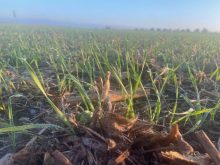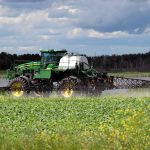Scientists at South Carolina’s Clemson University have begun the process of restoring a nearly extinct variety of wheat that traces its American roots to the 1700s.
A Clemson release says that Purple Straw is the only heirloom wheat to have been cultivated continually in the U.S. South from the Colonial Period into the last quarter of the 20th century. It remained a crop wheat until the 1970s, but now only a few seeds remain. About half a pound was seeded last fall and the scientists hope to harvest several hundred pounds in May.
Read Also

CUSMA access key among other trade noise: Seeds Canada panel
Seeds Canada conference panelists say Canada needs to stay focused and wait as U.S. trade and tariff chaos develops, and a Canada-U.S.-Mexico Agreement review looms
The release says that while most other ancestral wheat varieties were annihilated by disease in the 19th century, Purple Straw continued to thrive, perhaps because it’s a shorter-season winter wheat that matures before it could be seriously threatened.
While the scientists don’t expect Purple Straw to have high yields, it may have a place in the specialty food market.
“Purple Straw had certain culinary qualities that impressed people from the first,” said South Carolina food historian David Shields, who is the author of Southern Provisions: The Creation and Revival of a Cuisine. “It has a purplish stem and husk — hence its name. But it’s a high-protein, low-gluten wheat that mills white and is soft and easily handled, making it great for whiskey, cake flour and biscuits. And of course, what’s more southern than whiskey, cake and biscuits?”
The hunt for Purple Straw seed led to several locations, including an isolated area east of Cleveland inhabited by an Amish family. But the family had barely enough seed for its own needs. The Agricultural Research Center at Washington State University also had a small plot but that seed was reserved for further research.
Seed was eventually obtained from the USDA’s National Small Grains Collection in Aberdeen, Idaho and Sustainable Seed Company, an organic operation in Chico, California, which provides gardeners with almost 2,000 varieties of organic and heirloom germplasm.



















